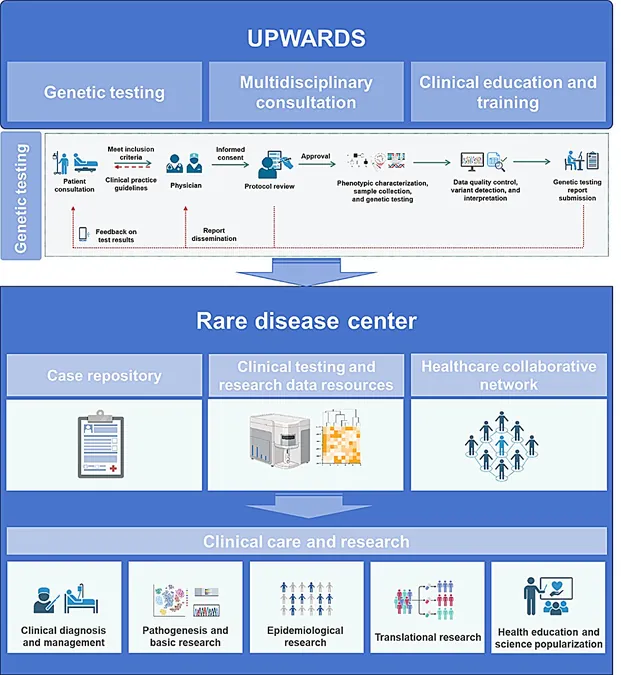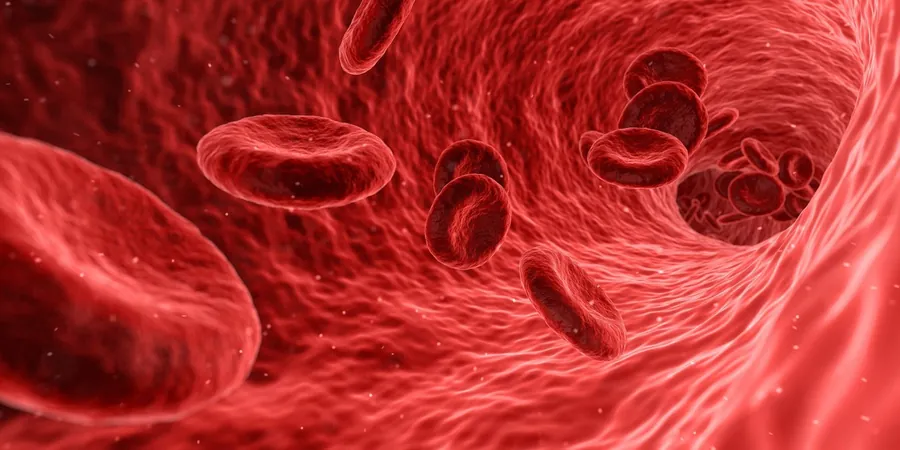
Revolutionary Genomics Study Sets New Standard for Diagnosing Rare Diseases in China
2025-09-02
Author: Rajesh
A Groundbreaking Initiative for Rare Disease Diagnosis
In a groundbreaking study involving over 42,700 families from 32 provinces, researchers in China have established a pioneering framework for diagnosing rare diseases. This innovative approach brings new hope to millions suffering from years of misdiagnosis or delayed identification.
Led by the prestigious Peking Union Medical College Hospital, the study, published on August 25 in Science Bulletin, is part of the ambitious UPWARDS Project, a nationwide public welfare initiative running from August 2022 to July 2024.
A Major Health Challenge in China
Estimates suggest that between 48 to 82 million people in China may be living with a rare disease. Despite this staggering number, many face significant barriers to receiving the correct diagnosis. A national survey from 2018 revealed that around 73% of patients had been misdiagnosed, often spending an average of 4.3 years seeking accurate assessments. Some journeyed through as many as 10 hospitals before discovering the truth.
"Diagnosis is essential for effective treatment," stated an expert from PUMCH's Rare Disease Center. "Given the complexity involved, the symptoms and genetic factors complicate the identification of these diseases."
Building a Comprehensive Diagnostic Network
The UPWARDS Project aims to unite China's healthcare professionals by establishing a standardized framework for genome testing of rare diseases. The framework includes a unique 3-in-1 model that integrates genetic testing, multidisciplinary consultations, and rigorous clinical education.
To maintain consistency, 444 hospitals collaborated with the centralized UPWARDS system, ensuring that all genetic testing was carried out in accredited laboratories.
Advanced Technologies Fueling Change
Utilizing cutting-edge technology, the initiative deployed Whole-exome sequencing (WES) for 77% of cases and Whole-genome sequencing (WGS) for the remaining 23%. Genetic variations were systematically interpreted in accordance with international guidelines.
Researchers established a five-level classification system to categorize cases by complexity. Notably, those with clearer symptoms achieved a diagnosis rate of 52%, while even the most complex cases saw an impressive 26% success rate.
Key Insights from the Research
Family involvement significantly boosts diagnostic accuracy; including genetic data from four or more relatives increased diagnosis rates to 39% compared to just 23% for individual patients.
The study also uncovered that multi-system disorders were diagnosed more frequently (34%) than single-organ conditions (28%). Furthermore, while most participants were from eastern and central provinces, interest continues to grow in western and northeastern regions.
Geographic analysis revealed specific genetic hotspots, demonstrating localized prevalence of certain conditions.
A Future Full of Potential
Despite the notable success, 70% of participants remain undiagnosed, attributed to China's unique genetic diversity and underutilization of cutting-edge genomic technologies. The UPWARDS team is now excited to explore future methods, such as integrating multi-omics data and AI-assisted analysis.
As this transformative project lays the groundwork for a Rare Disease Center, it promises to unite patient databases with expert networks, paving the way for precision medicine and innovative treatments.
The UPWARDS Project stands as a beacon of hope, not only shifting paradigms in Chinese healthcare but also contributing invaluable insights on a global scale. The goal is clear: ensure every patient suffering from rare diseases has access to a timely and accurate diagnosis.


 Brasil (PT)
Brasil (PT)
 Canada (EN)
Canada (EN)
 Chile (ES)
Chile (ES)
 Česko (CS)
Česko (CS)
 대한민국 (KO)
대한민국 (KO)
 España (ES)
España (ES)
 France (FR)
France (FR)
 Hong Kong (EN)
Hong Kong (EN)
 Italia (IT)
Italia (IT)
 日本 (JA)
日本 (JA)
 Magyarország (HU)
Magyarország (HU)
 Norge (NO)
Norge (NO)
 Polska (PL)
Polska (PL)
 Schweiz (DE)
Schweiz (DE)
 Singapore (EN)
Singapore (EN)
 Sverige (SV)
Sverige (SV)
 Suomi (FI)
Suomi (FI)
 Türkiye (TR)
Türkiye (TR)
 الإمارات العربية المتحدة (AR)
الإمارات العربية المتحدة (AR)